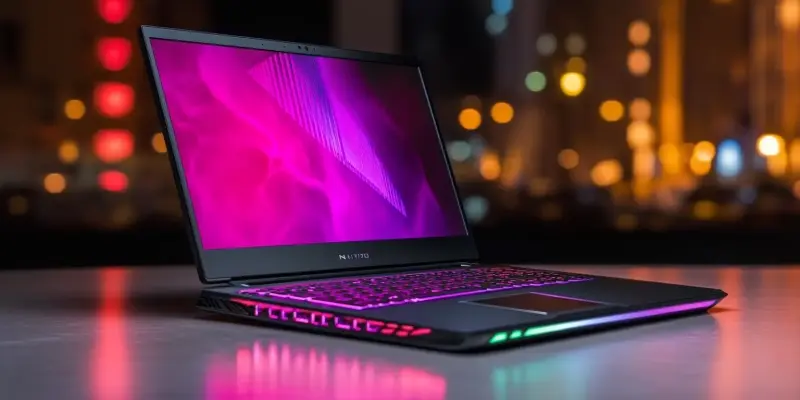As early benchmarks for Nvidia’s upcoming RTX 5090 laptop GPU have surfaced, the data presents a mixed and somewhat puzzling picture. Enthusiasts are eagerly combing through these benchmarks, hoping to glean insight into the performance leap that the RTX 5090 could bring. Yet, the initial results from Geekbench 6, particularly using Vulkan, have yielded inconsistent and surprisingly lower scores compared to its predecessors, the RTX 4080 and RTX 4090 laptop GPUs.
Initial Benchmarks and Performance Concerns
Mixed Performance Results
Perhaps the most notable issue highlighted by the early benchmarks is the inconsistency in performance. Despite being a next-generation GPU, the RTX 5090 has shown uneven Geekbench 6 scores, with results sometimes falling short of those recorded for the RTX 4080 and RTX 4090. This raises eyebrows, especially among potential buyers who expect a significant performance improvement with each new release. However, it is important to understand that such initial results are not necessarily reflective of the GPU’s true capabilities.
The inconsistency in Geekbench 6 scores is likely due to the lack of official drivers and optimizations. At this pre-launch stage, the software and firmware designed to maximize the RTX 5090’s performance are not yet available, and their absence can lead to fluctuations in benchmark outcomes. Moreover, benchmarks like Geekbench 6 are synthetic in nature and do not always provide an accurate representation of real-world gaming performance. These preliminary results should be taken with a grain of salt until more comprehensive testing and optimization are executed.
The Role of Drivers and Optimization
Another critical factor to consider is that the RTX 5090, along with its associated drivers, has not officially hit the market. Drivers play a pivotal role in harnessing the full power of any GPU, enabling it to perform optimally across various applications. In the absence of these drivers, the GPU cannot deliver consistent performance outcomes, which leads to the discrepancies observed in the early Geekbench 6 scores. As Nvidia finalizes its drivers and developers optimize their software to take advantage of the new architecture, we can expect these performance metrics to improve significantly.
In addition, historical trends within the industry suggest that initial benchmarks often fail to paint an accurate picture of a GPU’s true potential. Early leaks and tests tend to focus on raw, unoptimized hardware, shedding little light on how the device will perform once all the necessary tweaks and updates are applied. Thus, while current scores might seem disappointing, they do not spell doom for the RTX 5090. Instead, they underscore the necessity of patience and the importance of awaiting fully optimized drivers before jumping to conclusions.
Contextualizing Early Benchmarks in Real-World Use
Benchmarking Methodologies vs. Real-World Scenarios
Benchmark results must be contextualized within the broader scope of real-world usage. Geekbench 6 and similar benchmarking tools are useful for providing a baseline measurement of a GPU’s capabilities under controlled conditions. However, these measurements do not always translate directly to everyday applications, especially in scenarios involving complex, high-fidelity gaming environments. Real-world performance is influenced by a multitude of factors beyond raw computational power, such as software optimization, game engine compatibility, and thermal management.
Rather than basing final judgments solely on these early benchmarks, potential buyers should look towards real-world gaming benchmarks and reviews post-launch. These assessments will provide a more accurate and comprehensive view of the RTX 5090’s performance capabilities. By then, games and applications will have been patched or updated to support the new hardware, offering clearer insights into how the GPU handles diverse, demanding tasks. The importance of waiting for these real-world scenarios cannot be overstated, as they bridge the gap between synthetic benchmarks and user experiences.
Expert Opinions and Consensus
Recent benchmarks for Nvidia’s highly anticipated RTX 5090 laptop GPU have emerged, revealing a mix of data that leaves both excitement and puzzlement in its wake. Gaming and tech enthusiasts are diving deep into these benchmarks, eager to understand the performance advancements the RTX 5090 might offer. However, the early results from Geekbench 6, especially the ones utilizing Vulkan, present a surprising scenario. The scores are inconsistent and, in fact, lower than those of the previous generation’s RTX 4080 and RTX 4090 laptop GPUs. This unexpected outcome has generated confusion and speculation within the tech community. Many were expecting a significant leap in performance with the new GPU, given Nvidia’s track record. The initial data, however, suggests that there may be other factors at play affecting the performance metrics. As more benchmarks and real-world tests come to light, enthusiasts and experts alike hope to gain a clearer picture of what the RTX 5090 truly offers. Until then, the mixed results continue to stir both curiosity and concern.

